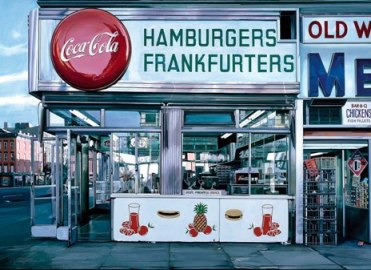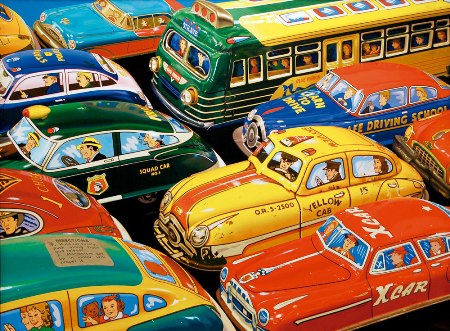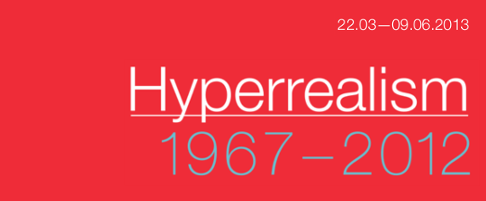Hyperrealism 1967-2012

This is the first exhibition in Spain to trace Hyperrealism’s development from its beginnings to the present. When the movement made its appearance in the United States in the late 1960s, Louis K. Meisel dubbed it “Photorealism”, describing Photorealists as artists who used the camera unreservedly as an aid to painting and transferred their images to canvas by mechanical, semi-mechanical or technical methods in such detail that the high resolution gave their paintings the illusion of being photographs. The new movement inherited from Pop Art a fetishistic passion for shop windows, gleaming cars and motorbikes, diners, Art Deco architecture, kitsch iconography and a fascination for painting not objects but stereotype images of objects.

Richard Estes Nedick's
- Año
- 1970
- Técnica
- Oil on canvas. 121.9 x 167.6 cm
- Propiedad
- Carmen Thyssen-Bornemisza Collection on deposit at Museo Thyssen-Bornemisza, Madrid
- Nº INV. 539 (1977.93)
The Hyperrealists not only use the camera as a tool to document everyday American life, but also to analyse perception and the ways in which photography has changed our relationship with what we regard as objective reality. As Audrey Flack’s paint tubes or Charles Bell’s tin toys reveal, with the photographic image their starting-point, Hyperrealists are particularly partial to extreme close-ups and gigantic proportions. In contrast, they also produce panoramic landscapes: from Richard Estes to Ben Johnson a string of painters have made names for themselves by reinventing the modern city veduta with work reminiscent of Canaletto and Bellotto.

Don Jacot Rush Hour
- Año
- 2009
- Técnica
- Oil on linen
- Medidas
- 137 x 183 cm.
- Propiedad
- Richard Alexandre Collection
- image © Don Jacot photo © Galerie Rive Gauche, Marcel Strouk
Hyperrealism first won acclaim at the Kassel Documenta 5 in 1972, curated by Harald Szeemann. Since then, a large number of artists have continued to work with this technique, extending its range of motifs and tools. Thanks to technological advances, more recent Hyperrealist works have achieved a certain degree of high definition resolution. The exhibition features more than sixty paintings by three generations of artists, starting with the first American exponents, including Richard Estes, John Baeder, Robert Bechtle, Tom Blackwell and Chuck Close, and also focuses on Hyperrealism’s importance on the international art scene to the present day.





